The Unseen Danger on Your Plate
Would you ever knowingly eat a credit card worth of plastic every week? Probably not. But according to a shocking study by the World Wildlife Fund (WWF), the average person consumes up to 5 grams of microplastics per week—the equivalent of one credit card.
Yes, you read that right. Plastic is now in our food, water, and even the air we breathe. And the worst part? Scientists are just beginning to understand the devastating impact this invisible enemy has on our health.
From bottled water to seafood, salt, and even fresh produce, microplastics are contaminating our bodies at an alarming rate. But how does plastic get into our food? What does it do to our health? And most importantly, how can we stop eating it?
Let’s dive deep into this modern-day crisis and explore how much plastic you’re really consuming—and what you can do about it.
Where Does Plastic in Food Come From?
Microplastics—tiny plastic particles smaller than 5mm—are everywhere. They come from plastic waste breaking down in the environment, industrial production, and even everyday household items.
Here’s where they sneak into your diet:
1. Bottled Water & Tap Water
📌 Biggest Contributor: Studies show that bottled water contains twice as many microplastics as tap water.
📌 What’s Inside? Polyethylene terephthalate (PET) and polypropylene from bottle caps.
📌 Shocking Fact: On average, a bottled water drinker ingests 90,000 plastic particles per year, compared to 40,000 for tap water drinkers.
2. Seafood & Fish
📌 Biggest Contributor: Oceans are drowning in plastic, and marine life ingests these particles, which we then consume.
📌 What’s Inside? Polyethylene, polystyrene, and polypropylene.
📌 Shocking Fact: 100% of mussels tested in European supermarkets contained microplastics.
3. Table Salt
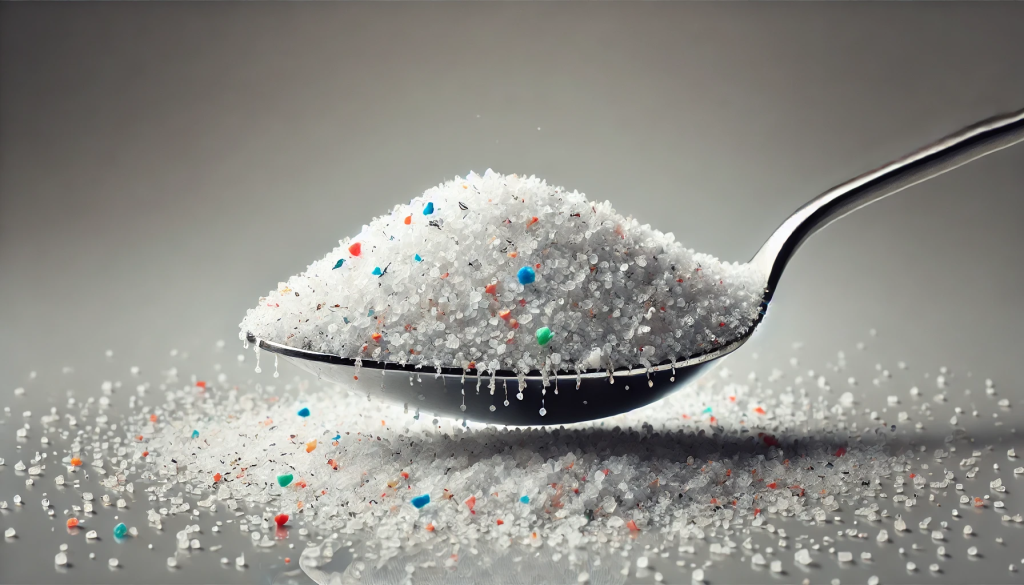
📌 Biggest Contributor: Salt is harvested from oceans, which are contaminated with plastic waste.
📌 What’s Inside? Synthetic fibers, polystyrene, and polyethylene.
📌 Shocking Fact: A person consuming the recommended daily salt intake eats over 2,000 microplastic particles per year.
4. Fruits & Vegetables
📌 Biggest Contributor: Microplastics in soil and irrigation water contaminate crops.
📌 What’s Inside? Polypropylene and polyethylene from agricultural plastics.
📌 Shocking Fact: Apples and carrots have the highest levels of microplastics among tested produce.
5. Processed & Packaged Foods
📌 Biggest Contributor: Plastic packaging and food processing equipment.
📌 What’s Inside? Phthalates and BPA, which leach into food.
📌 Shocking Fact: Even baby food has been found to contain microplastics.
What Science Says: The Shocking Truth About Microplastics in Your Body
Microplastics Found in Blood, Organs, and the Brain
Recent studies confirm that microplastics don’t just pass through the body—they get absorbed into the bloodstream, organs, and even the brain.
🔬 A 2022 study from Vrije Universiteit Amsterdam found plastic particles in 77% of blood samples tested.
🧠 In 2023, University of Vienna researchers discovered microplastics in human brain tissue, raising concerns about cognitive decline.
How Plastic Affects Your Gut and Health
📌 A 2021 study in Environmental Science & Technology showed that microplastics damage gut cells and disrupt microbiota.
📌 Another study in Nature Communications (2023) linked microplastic exposure to increased inflammation and immune dysfunction.
⚠️ Potential Health Risks:
- Hormone Disruption – BPA & phthalates interfere with estrogen/testosterone.
- Increased Cancer Risk – Microplastics cause oxidative stress, a known trigger for tumor growth.
- Chronic Inflammation – Linked to heart disease, diabetes, and autoimmune disorders.
Microplastics in the Air: Are You Inhaling Plastic?
A 2023 study found that humans inhale over 400 microplastic particles daily, which can penetrate deep into the lungs, increasing the risk of asthma, lung disease, and fibrosis.
How Much Plastic Are You Eating Per Year?
| Food/Drink Source | Microplastics Consumed Per Year | Equivalent in Plastic |
|---|---|---|
| Bottled Water | 90,000 particles | One credit card per month |
| Tap Water | 40,000 particles | One credit card every 2 months |
| Seafood & Fish | 11,000 particles | One plastic bag per year |
| Salt | 2,000 particles | One plastic straw per month |
| Fruits & Vegetables | 1,400 particles | One grocery bag per year |
| Processed Food | 50,000 particles | One plastic fork per month |
TOTAL PLASTIC CONSUMED PER YEAR:
🎯 250 grams of plastic annually (Half a pound!)
Imagine eating a whole plate of plastic shavings every year—because that’s exactly what’s happening!
What Are the Health Risks of Eating Plastic?
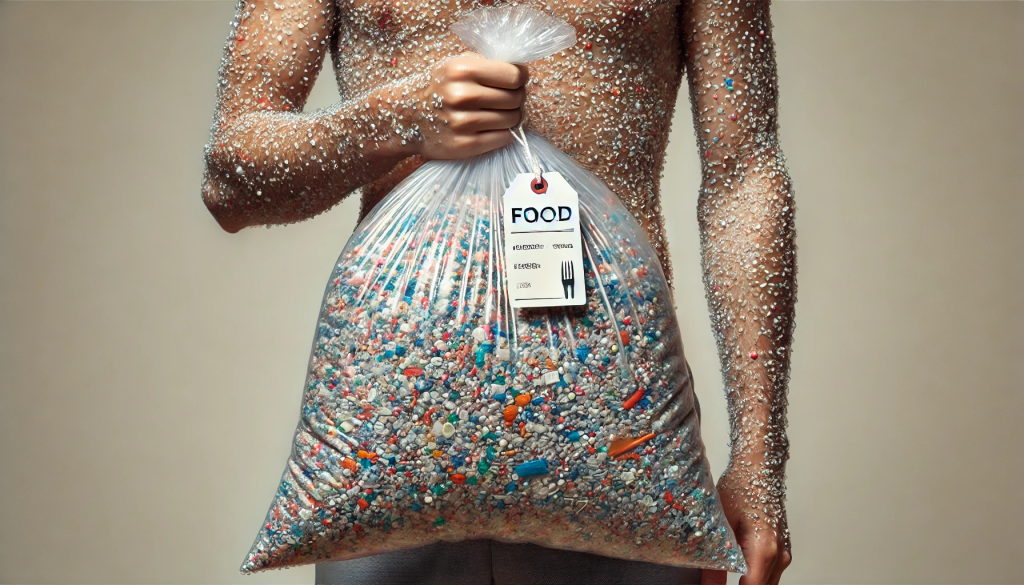
Scientists are still uncovering the long-term effects of microplastics in the human body, but early research is deeply concerning:
🚨 Inflammation & Organ Damage – Microplastics can trigger chronic inflammation in the gut, liver, and kidneys.
🚨 Hormone Disruption – Chemicals like BPA and phthalates interfere with estrogen and testosterone levels, leading to fertility issues.
🚨 Brain & Nervous System Damage – Studies show microplastics can cross the blood-brain barrier, potentially leading to cognitive decline.
🚨 Cancer Risk – Certain plastics contain carcinogenic compounds linked to increased cancer risks.
How to Stop Eating Plastic
✅ 1. Switch to a Reusable Water Bottle
Bottled water is the biggest source of microplastic exposure! Instead, use a stainless steel or glass bottle and invest in a water filter.
✅ 2. Eat Fresh, Whole Foods
Packaged and processed foods contain more plastic contamination. Stick to organic, fresh fruits, vegetables, and whole grains.
✅ 3. Avoid Plastic Food Containers & Wrappers
When storing food, use glass or stainless steel containers instead of plastic. Avoid microwaving food in plastic containers, as heat releases toxins.
✅ 4. Choose Sustainable Seafood
To minimize microplastic exposure, opt for smaller fish, like sardines, which accumulate less plastic compared to larger species.
✅ 5. Use Natural Sea Salt
Switch to unrefined Himalayan or rock salt instead of processed sea salt, which contains microplastics.
✅ 6. Filter Your Water
A reverse osmosis or activated carbon filter can significantly reduce microplastic contamination in tap water.
✅ 7. Support Plastic-Free Initiatives
Reduce your own plastic footprint by using cloth grocery bags, beeswax wraps, and refillable containers.
Final Thoughts: Can We Stop the Plastic Epidemic?
The fact that we’re unknowingly eating plastic every day should be a wake-up call. Microplastics are everywhere, and they’re silently infiltrating our bodies.
While individual actions matter, this is a global crisis that requires government action, corporate responsibility, and widespread awareness.
So next time you reach for a plastic-wrapped snack or a bottle of water, ask yourself:
Is this worth eating plastic for?
The solution starts with you—and every small change adds up to a healthier body and a cleaner planet.


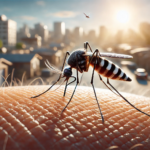


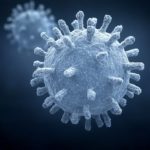




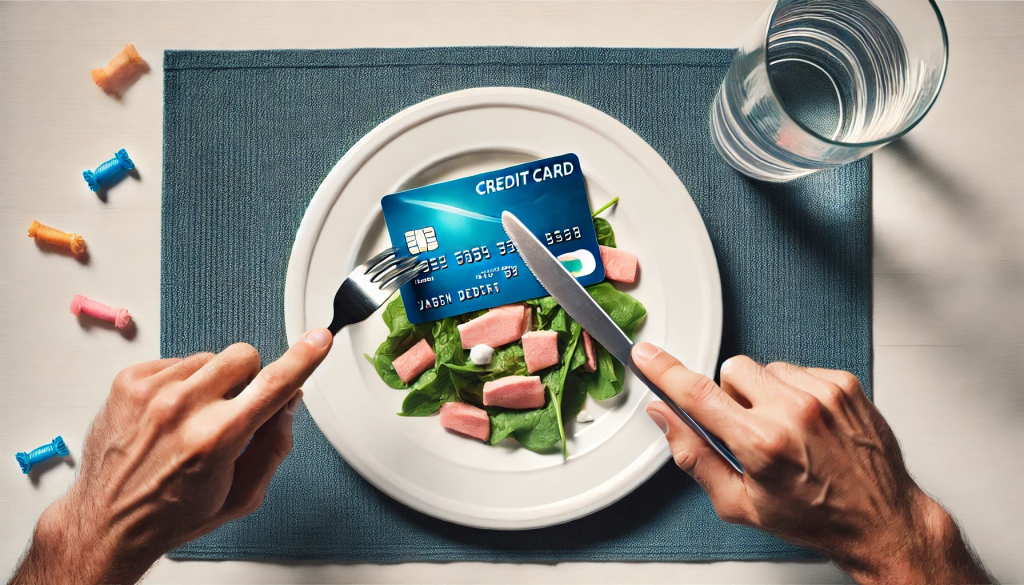



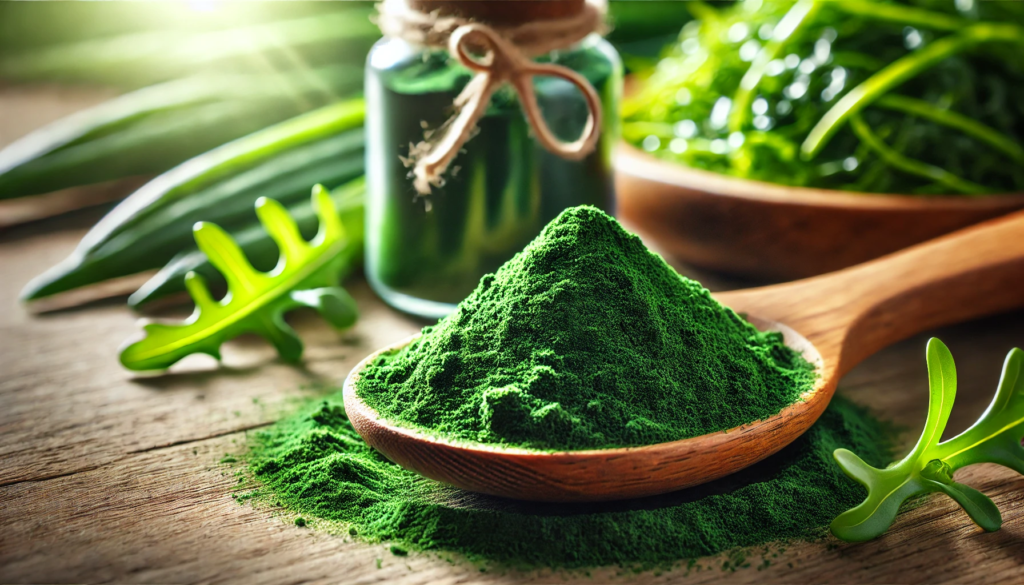


Pingback: Microplastics in Your Water? Here’s How to Filter Them Out for Good - Medhouse.info